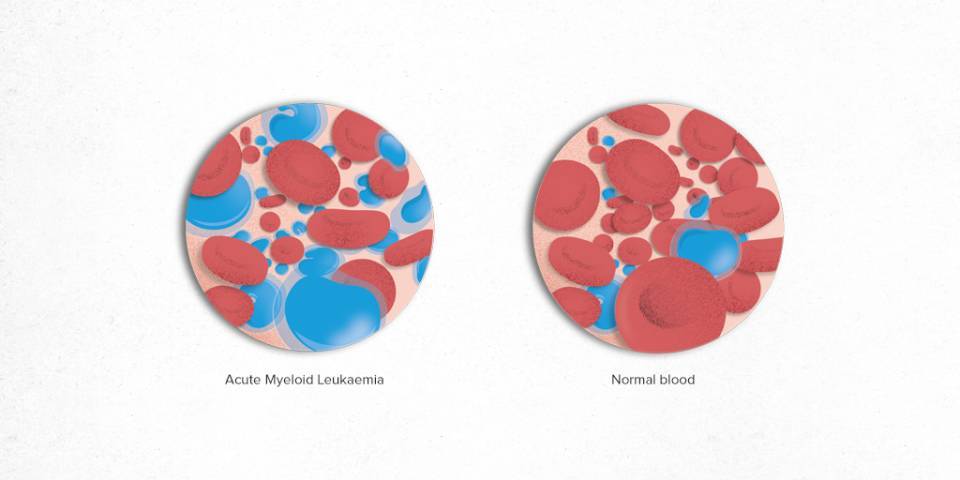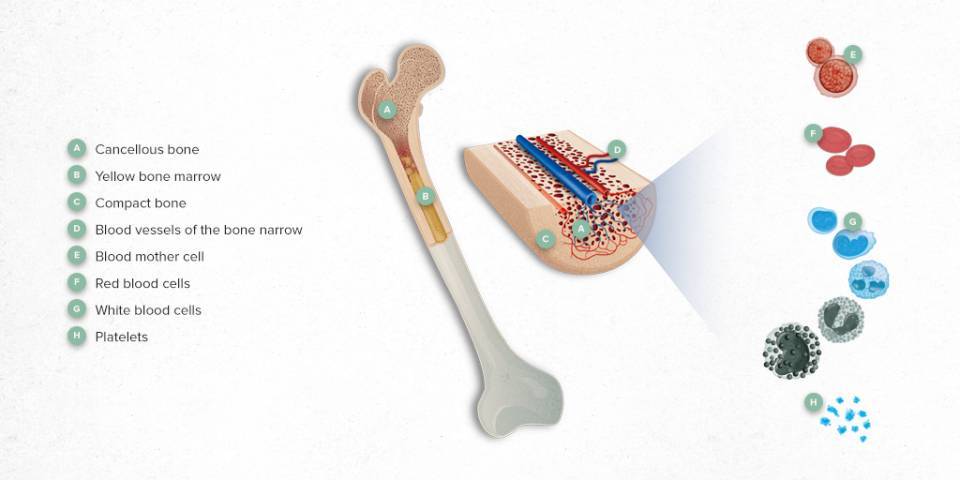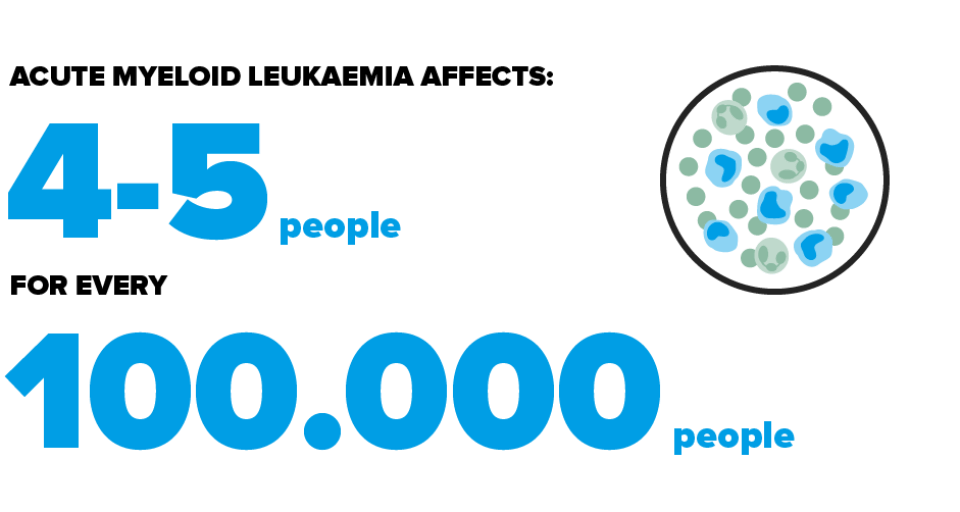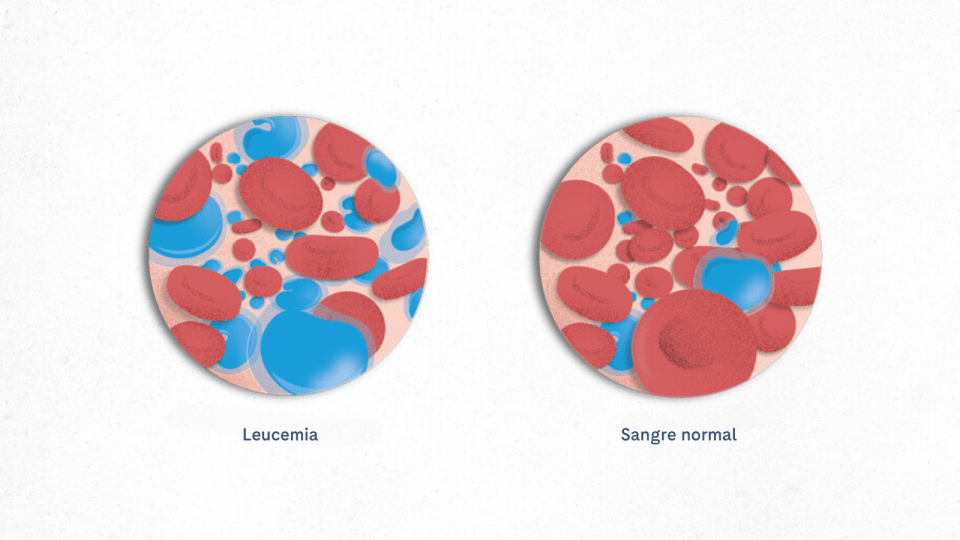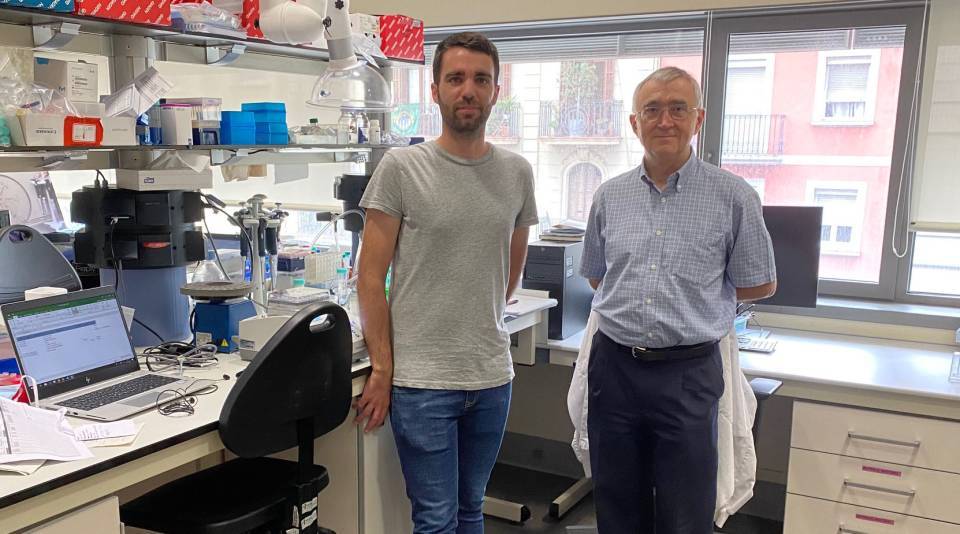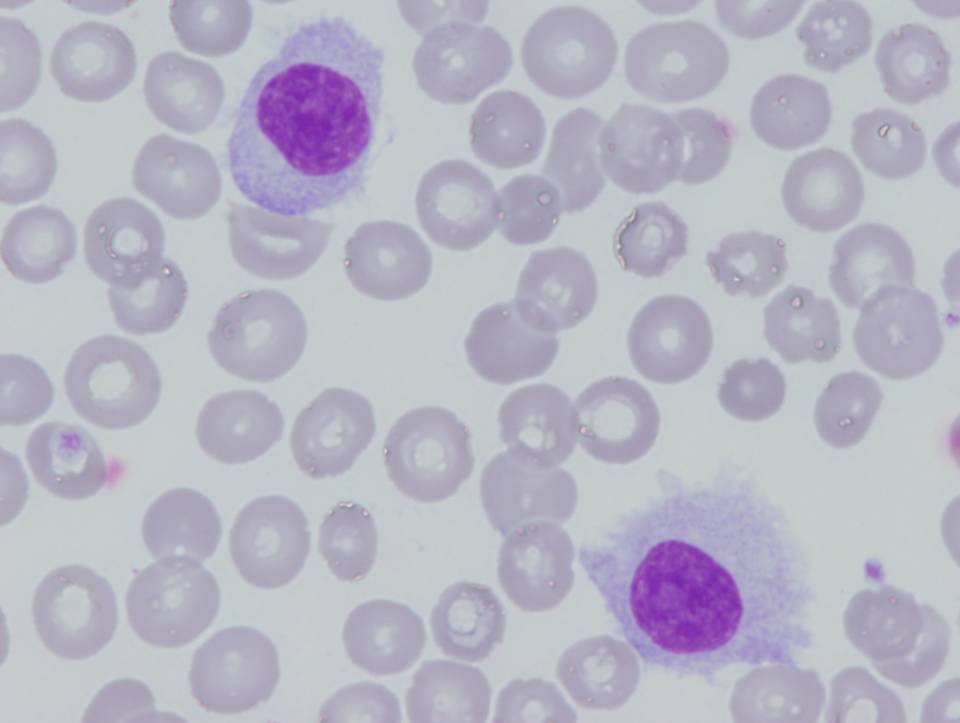What is Acute Myeloid Leukaemia?
Acute myeloid leukemia (AML) is a type of cancer of the bone marrow caused by an alteration in the maturation and proliferation of bone marrow stem cells that produce blood cells. It is the most frequent acute leukemia in adults, most cases appear after 60 years.
Acute Myeloid Leukaemia explained in first person
It’s not an easy process, certainly not, I don’t think anyone should be misled about that. You need a lot of patience and the path is riddled with obstacles. But with optimism, hope, and the desire to fight, it can definitely be overcome.
It is important that patients seek support in the people they are closest to and in their healthcare professionals. We must all maintain a positive attitude, be strong and, above all, trust each other.
Bone marrow is found inside bones and produces blood stem cells (immature cells) that later become mature blood cells. Once mature, the myeloid stem cell is transformed into one of the three main types of mature blood cells:
- Red blood cells. These carry oxygen and other substances to all tissues in the body.
- White blood cells. These defend the body against infections and diseases.
- Platelets. These prevent bleeding by forming blood clots.
In the case of acute myeloid leukaemia (AML), the myeloid stem cells are transformed into abnormal, immature cells (malignant) known as myeloid blasts. Blasts are leukaemia tumour cells that do not mature normally, in other words, they are not transformed into healthy white blood cells. Blasts proliferate abnormally and progressively invade the bone marrow, interfering with the production of normal blood cells, causing medullary insufficiency where the bone marrow produces less healthy cells and, sometimes, infiltrates tissues outside the bone marrow. These blasts (immature cells) therefore prevent the bone marrow functioning properly.
Types of Acute Myeloid Leukaemia
Acute myeloid leukaemia (AML) is classified according to the 2006 FAB (French‑American‑British) system and the World Health Organisation (WHO) system.
The FAB system classifies AML into eight subtypes that range from M0 to M7. This distribution is based on the type of leukaemia cells and their degree of maturity observed under the microscope or using cytogenetic techniques (the part of genetics that studies chromosomes and related diseases caused by an abnormal chromosome number or structure).
| FAB type | Definition | Frequency |
|---|---|---|
| AML 0 | Undifferentiated acute myeloid leukaemia | 2 - 5% |
| AML 1 | Acute myeloblastic leukaemia with minimal maturation | 15 - 20% |
| AML 2 | Acute myeloblastic leukaemia with maturation | 25 - 30% |
|
AML 3 |
Acute promyelocytic leukaemia (with translocation t15;17) | 10 - 15% |
| AML 4 | Acute myelomonocytic leukaemia (AMML) | 15 - 30% |
| AML 5 | Acute monocytic leukaemia (AML) | 10 - 15% |
| AML 6 | Acute erythroid leukaemia | 3 - 4% |
| AML 7 | Acute megakaryoblastic leukaemia | 1% |
On the other hand, the WHO classification takes into account genetic factors that directly impact the prognosis and treatment of the disease. In this way, the subtypes of acute myeloid leukaemia are differentiated according to the presence of known genetic alterations in the tumour cells or determining clinical factors:
- AML with recurring cytogenetic alterations. A group in which the main sub-types are included in schematic form:
- AML with 8;21; RUNX1-RUNX1T1* translocation
- AML with the conversion of chromosome 16 or t(16;16)CBFB-MYH11**
- Acute Pro-myelocytic Leukaemia (APML) with the 15;17 (PML-RARA) translocation
- AML with 9;11 MLLT3-KMT2A translocation
- AML with 6;9 DEK-NUP214 translocation
- AML with the conversion of chromosome 3 or t(3;3); GATA2, MECOM
- Acute megakaryocytic leukaemia (AMKL) with 1;22 RBM15-MKL1 translocation
- AML with mutated NPM1
- AML with biallelic mutation of CEBPA
- AML with BCR-ABL1 translocation ***
- AML with mutated RUNX1***
* A translocation is the displacement of a segment of a chromosome to another chromosome: thus, in this case, part of chromosome 8 is located in 21, is indicated as t(8;21)
** An inversion implies that a segment of the chromosome changes place within the same chromosome; is indicated as inv(16).
*** Considered provisional entities
- AML with myelodysplasia-related changes (disorders related to the body’s inability to produce enough normal blood cells)
- Myeloid neoplasms related to previous treatments
- AML related to Down’s Syndrome
- Unspecified AML:
-
- AML minimally differentiated*
- AML without maturation*
- AML with maturation*
- Acute myelo-monocytic Leukaemia*
- Acute monoblastic or monocytic leukaemia*
- Acute pure erythroid leukaemia
- Acute megakaryoblastic leukaemia*
- Acute basophilic leukaemia
- Acute panmyelosis with myelofibrosis
-
* They correspond to the FAB classification (from AML0 to AML7)
- Myeloid sarcoma
How many people does Acute Myeloid Leukaemia affect?
Acute myeloid leukaemia (AML) is a disease that occurs mainly in adults. Its overall global incidence is estimated as 4-5 new cases per 100,000 people per year. It usually appears from the age of 65 onwards and its incidence increases with age, rising to around 15 new cases per 100,000 inhabitants in people aged over 75.
Related content
Substantiated information by:


Published: 8 April 2019
Updated: 8 April 2019
Subscribe
Receive the latest updates related to this content.
Thank you for subscribing!
If this is the first time you subscribe you will receive a confirmation email, check your inbox
